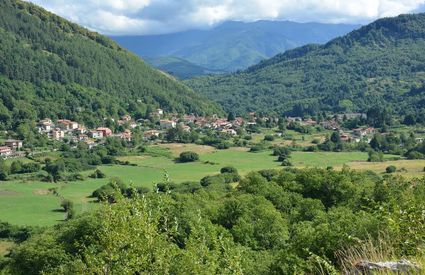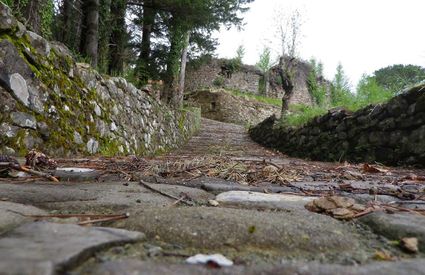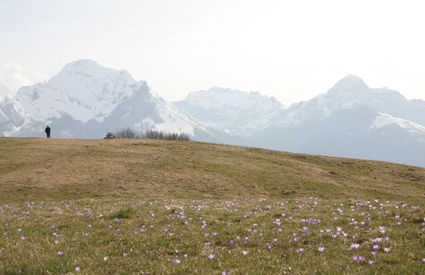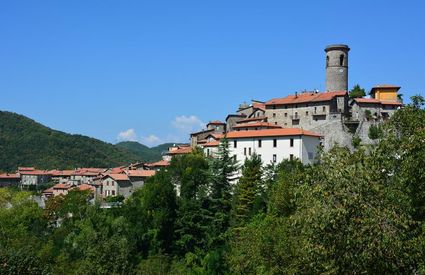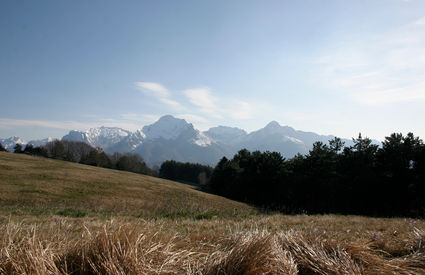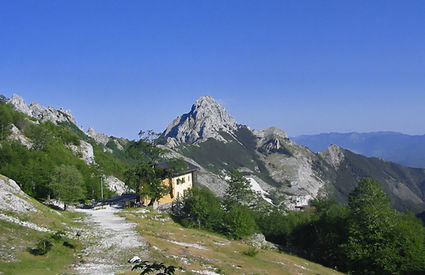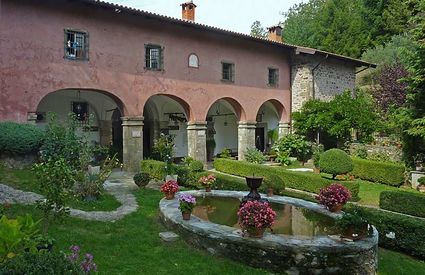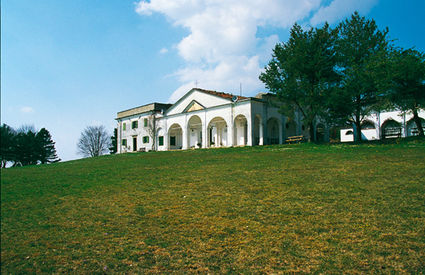Minucciano
Lost between the Apuan Alps lies a valley with a secret
Can old Etruscan be discerned in the language spoken among the gorges of Minucciano, isolated and protected?
Lost between the Apuan Alps lies a valley with a secret
Can old Etruscan be discerned in the language spoken among the gorges of Minucciano, isolated and protected?
A small mysterious and ancient land
On
the very edge of Tuscany, locked in a lost gorge between the Apuan Alps and the Apennines, lies a land that holds a secret, a mystery that has left
its mark in the twists of a language spoken in a handful of villages on the slopes of the Passo dei
Carpinelli, in an ancient land that embraces the vast Minucciano valley.
In this land, which is both Garfagnana and Lunigiana, an odd language is
spoken, incomprehensible, which has nothing in common with any other
language and which for some (the few pig-headed people who are committed to
upholding a lost language in this little visited valley) remains a secret held
in the sound and etymology of often incomprehensible words that are hard to
decipher in phonetic terms.
A strange dialect…
When the word gorpa is spoken here you can perhaps guess at the reference to volpe (fox), but uigghia for broom and maron for hoe led to studies in the 1970s, which resulted in a theory that the language of Minucciano is totally unique. (Go a few kilometres outside the valley and you won’t find it used anywhere!). Our language – this is the suggestion that pairs with the myth and resounds in the research done by linguists – is thought to date back to Etruscan times. Our words, with their unfathomable etymology, are believed to be the linguistic survivor of an ancient Etruscan outpost, which protects the secret of this mountain-locked gorge, which maybe even withstood ruthless Roman colonization.
…and a magical valley
Now,
whiling away a day in the verdant woods
of Gorfigliano, Verrucolette and Agliano, walking along the paths that unfurl through
the mountain, perhaps reaching the heights of contemplation at Lake Gramolazzo
(and seeing the mirrored image of Pisanino, the highest peak in the Apuan Alps,
in its waters), or discovering the remains of the Ospitale di Tea, Bergiola
and the old church of Gorfigliano (a centuries-old castle perched on a
hilltop that dominates most of the valley), or visiting Pieve
San Lorenzo, the villages of Castagnola, Sermezzana, Albiano,
Metra, Pugliano Antognano and Minucciano itself with its tower, or
heading deep into the Orto di Donna valley and making a trip to the sanctuaries where recluses
still live according to the Benedictine order. All this means visiting a part
of the world in which the Etruscan language still lives on today.
Who knows if centuries ago even around Chiusi and Sorano, Cortona and Tarquinia
a stick was called a vettòn, as the locals here still call it
today. Even if that wasn’t the case, it would still be worth visiting this
magical lost corner near the Apuan Alps, as lovely now as ever.


